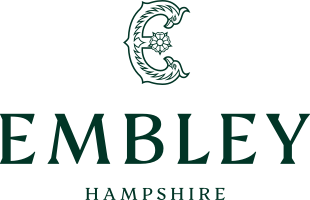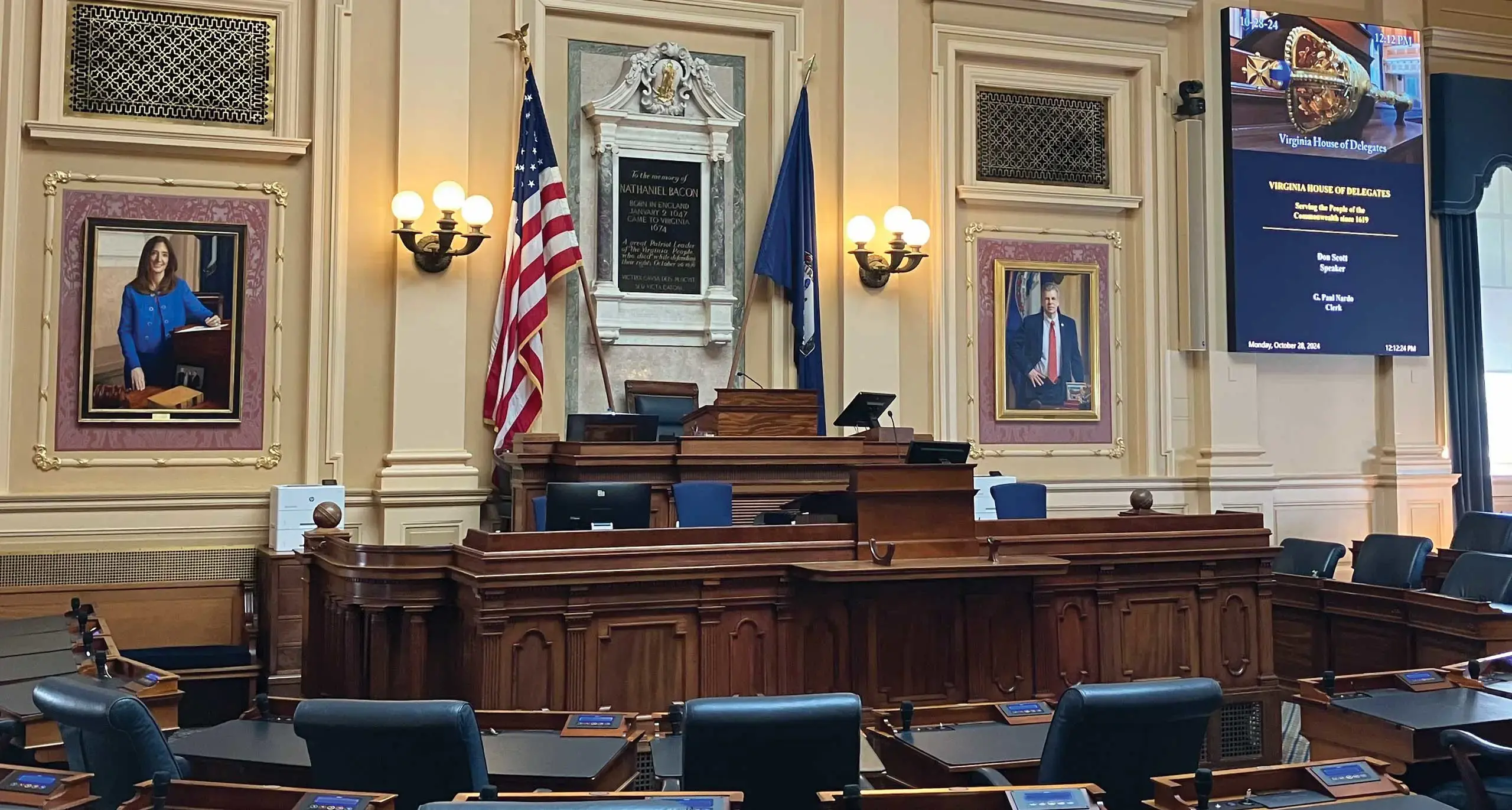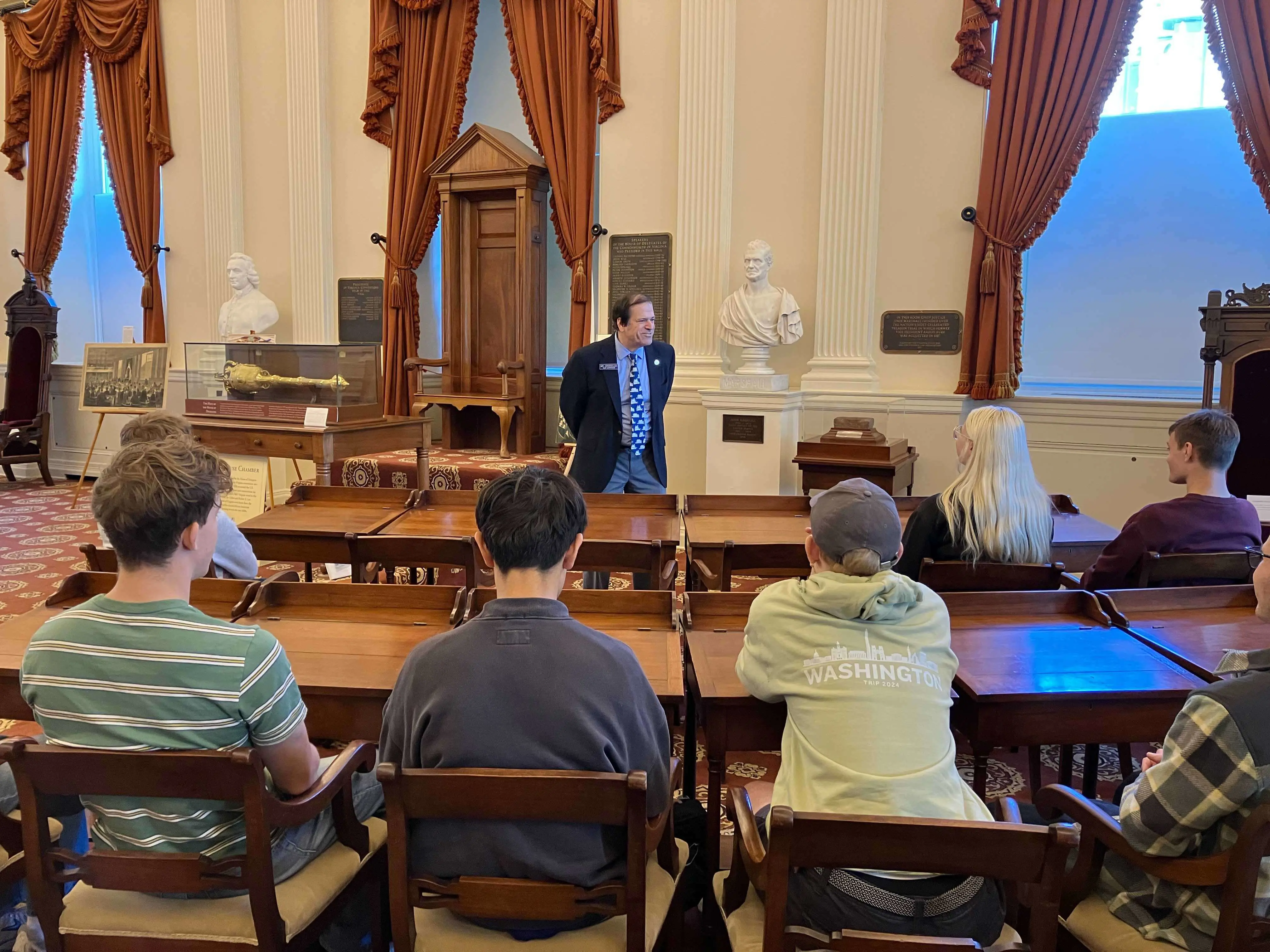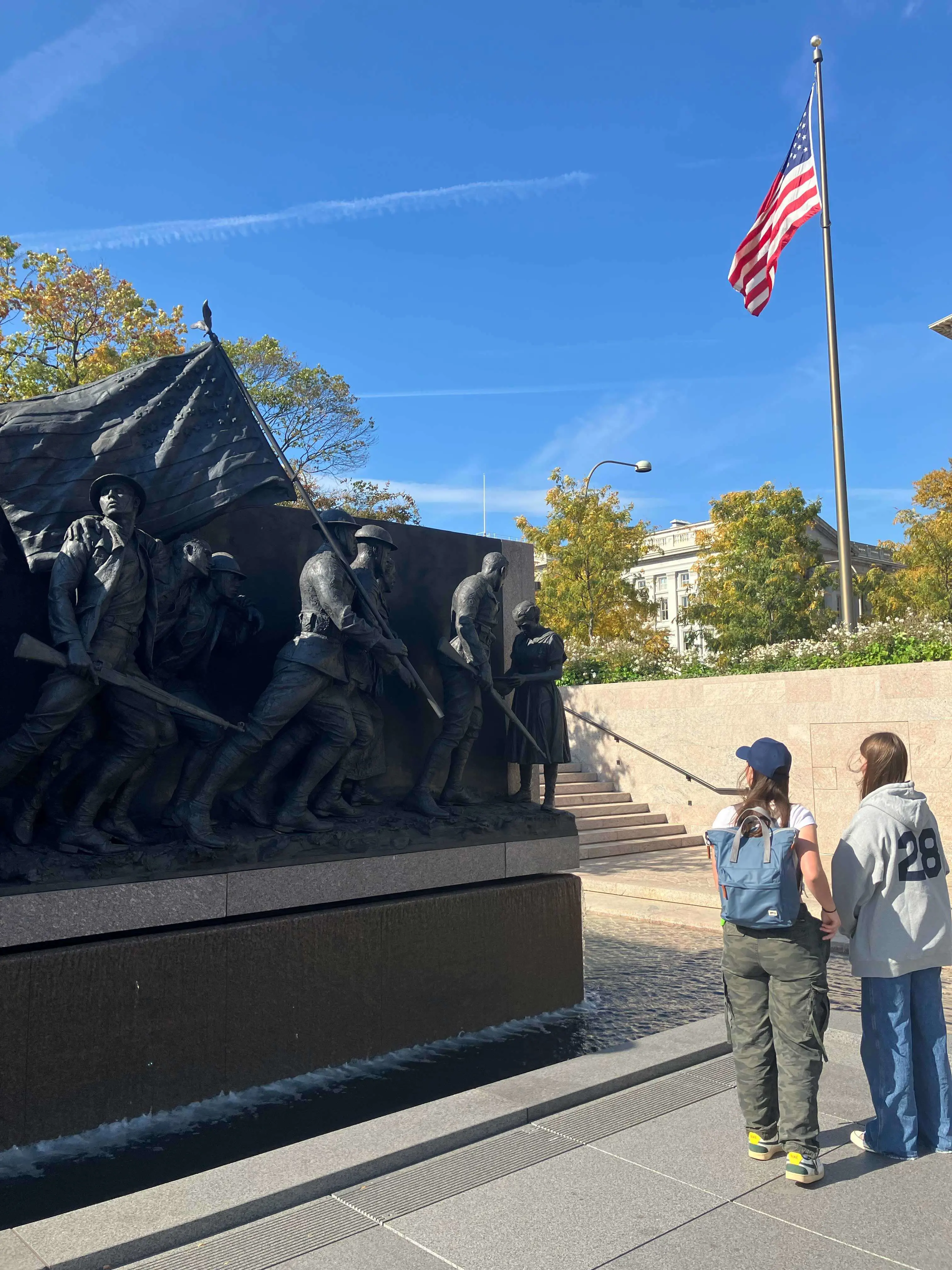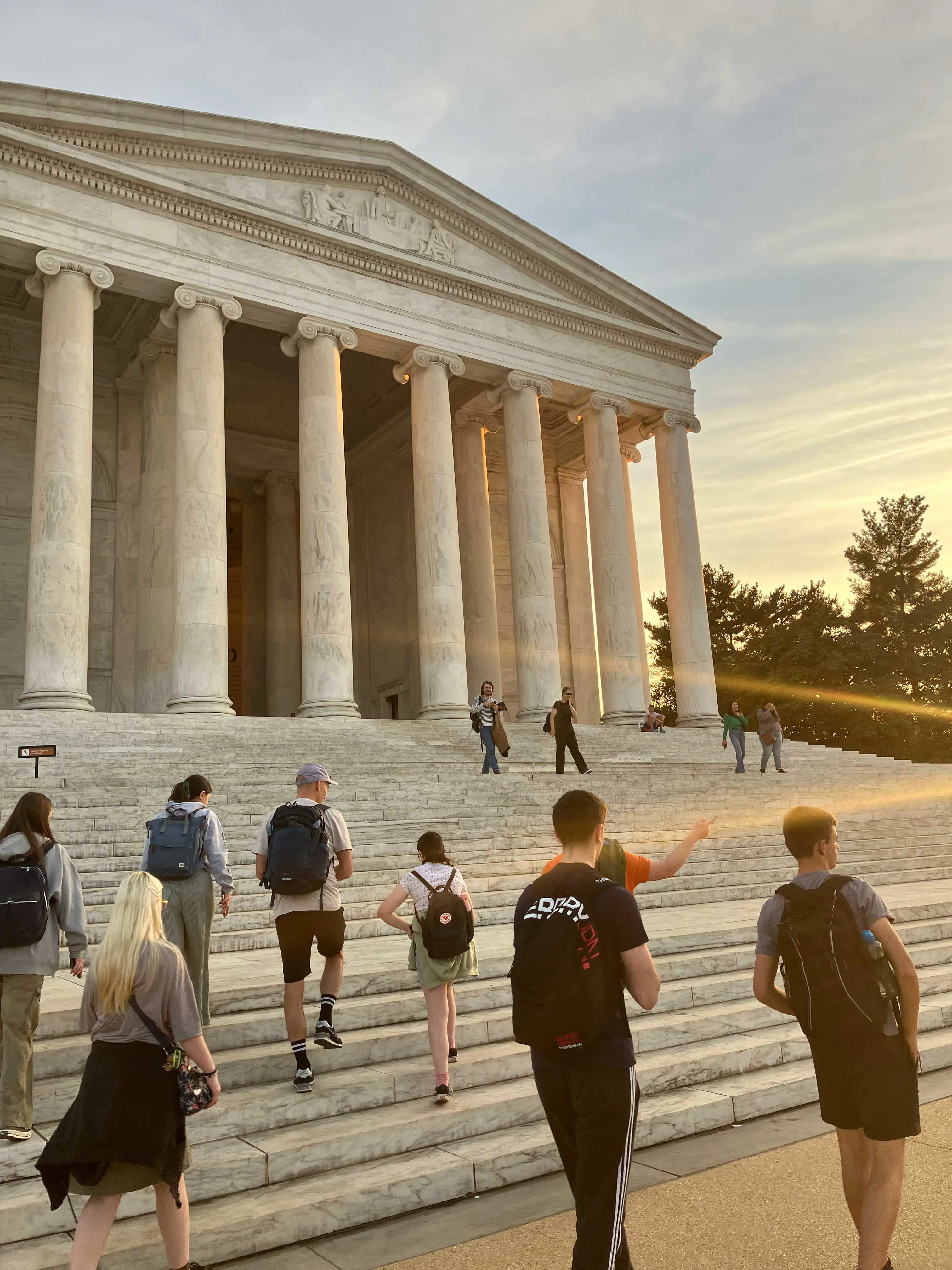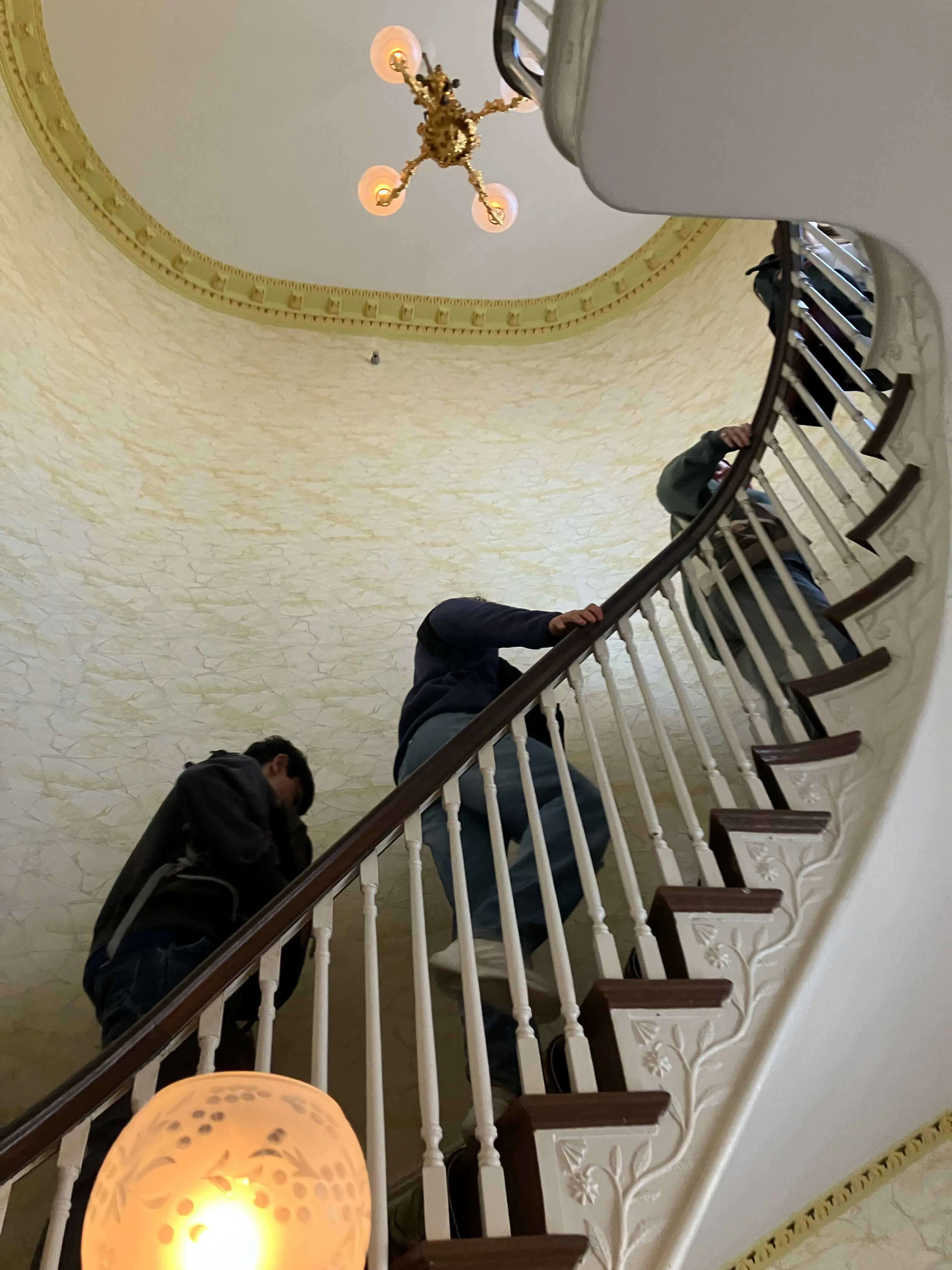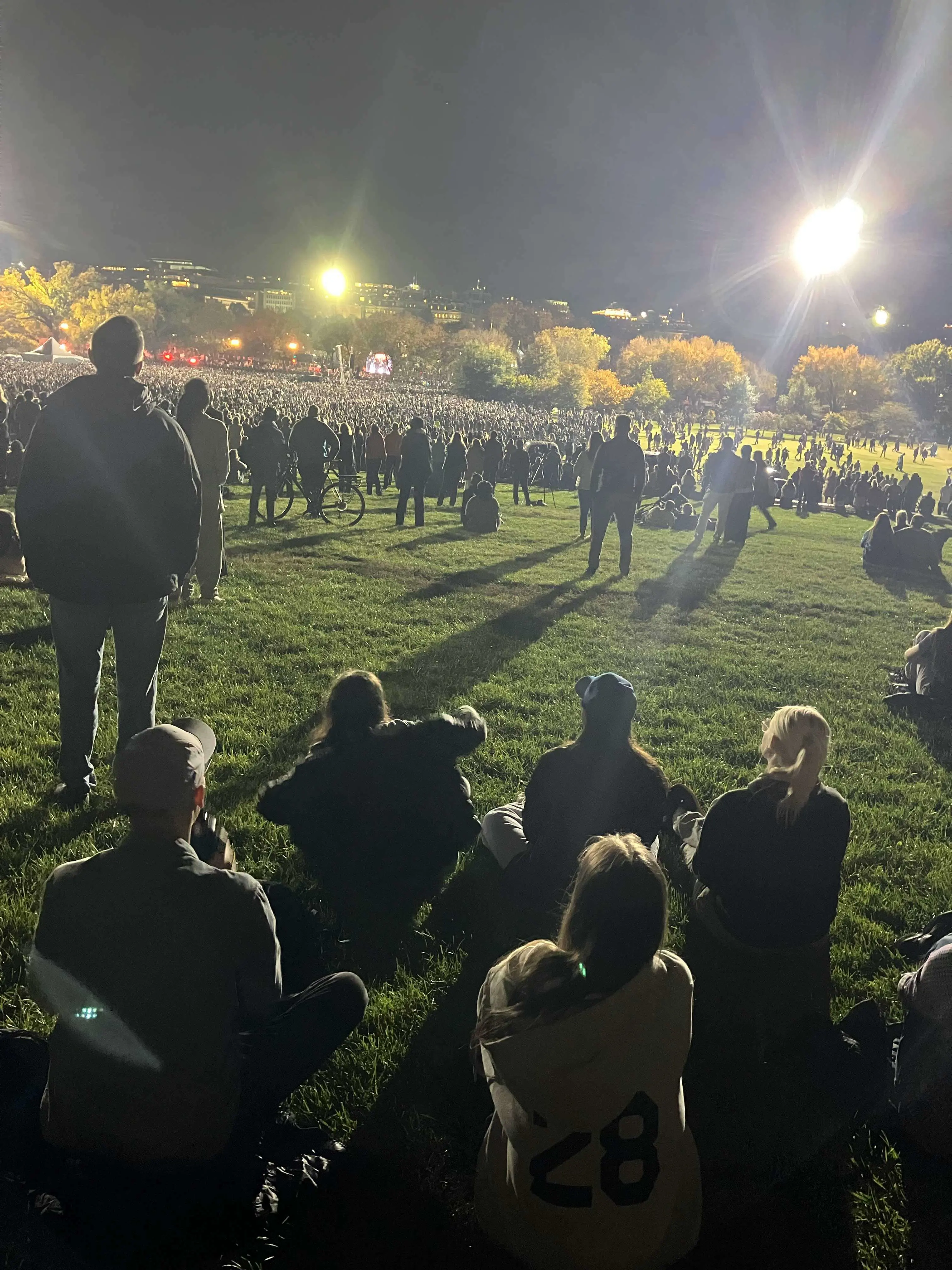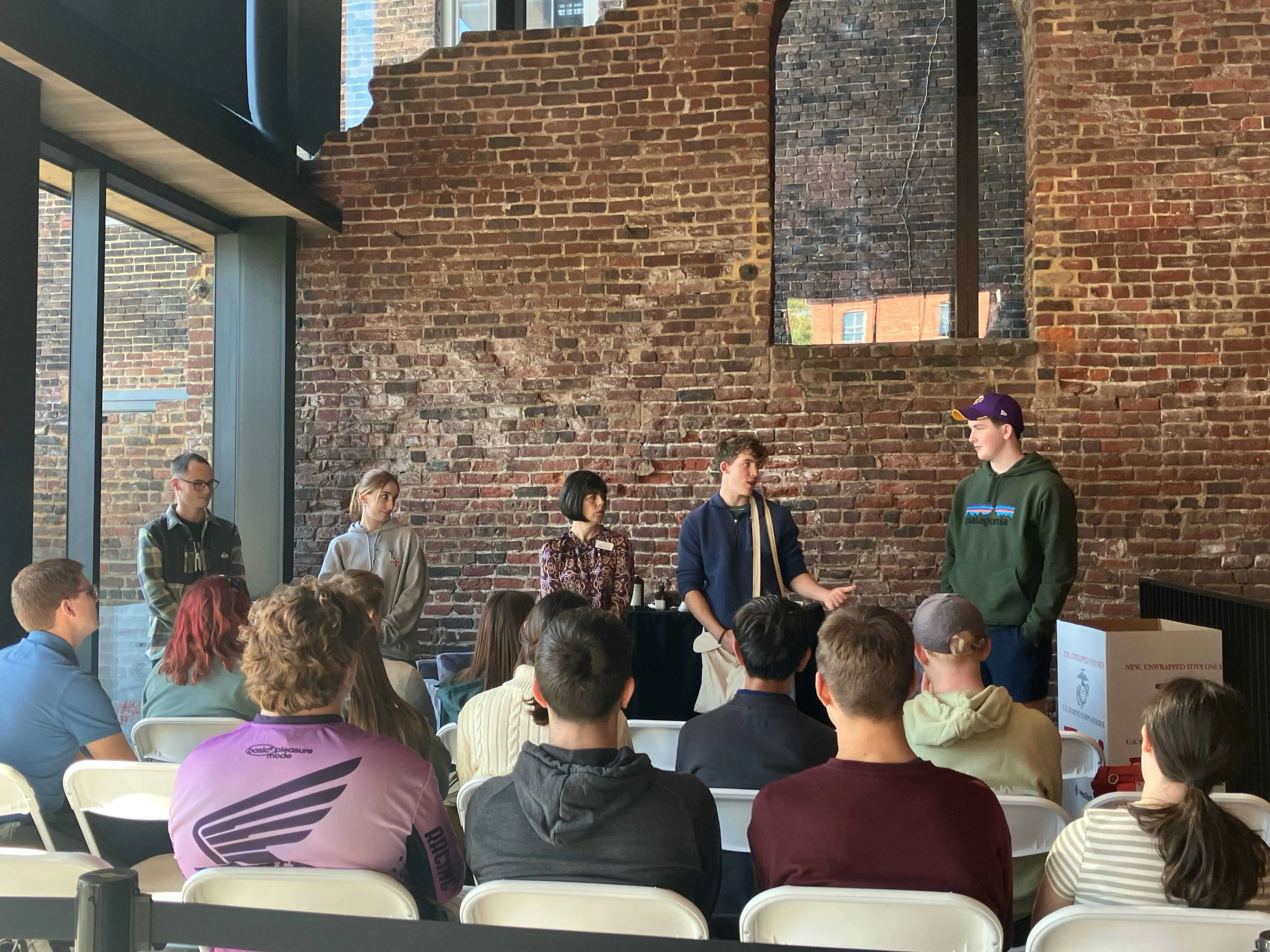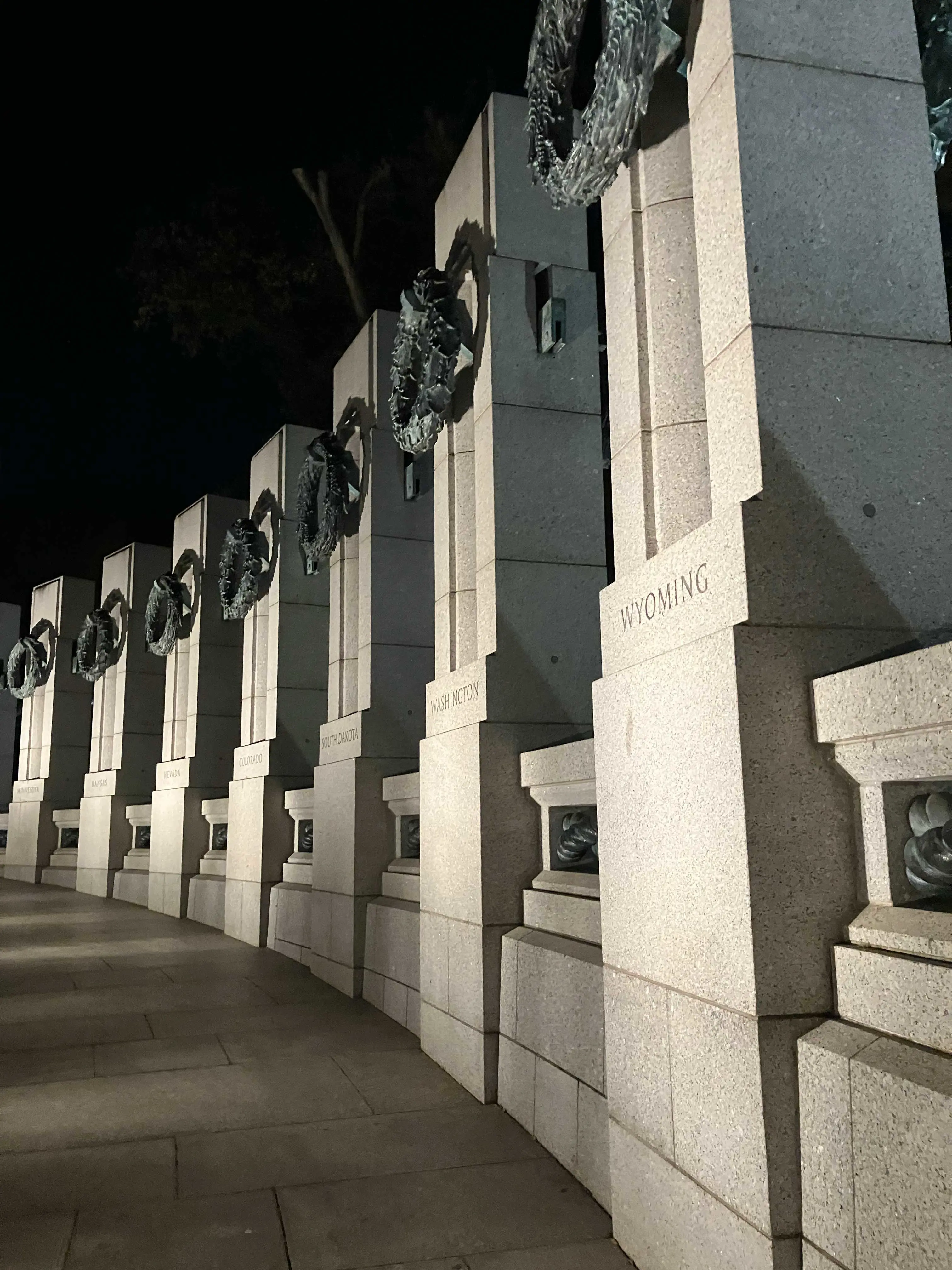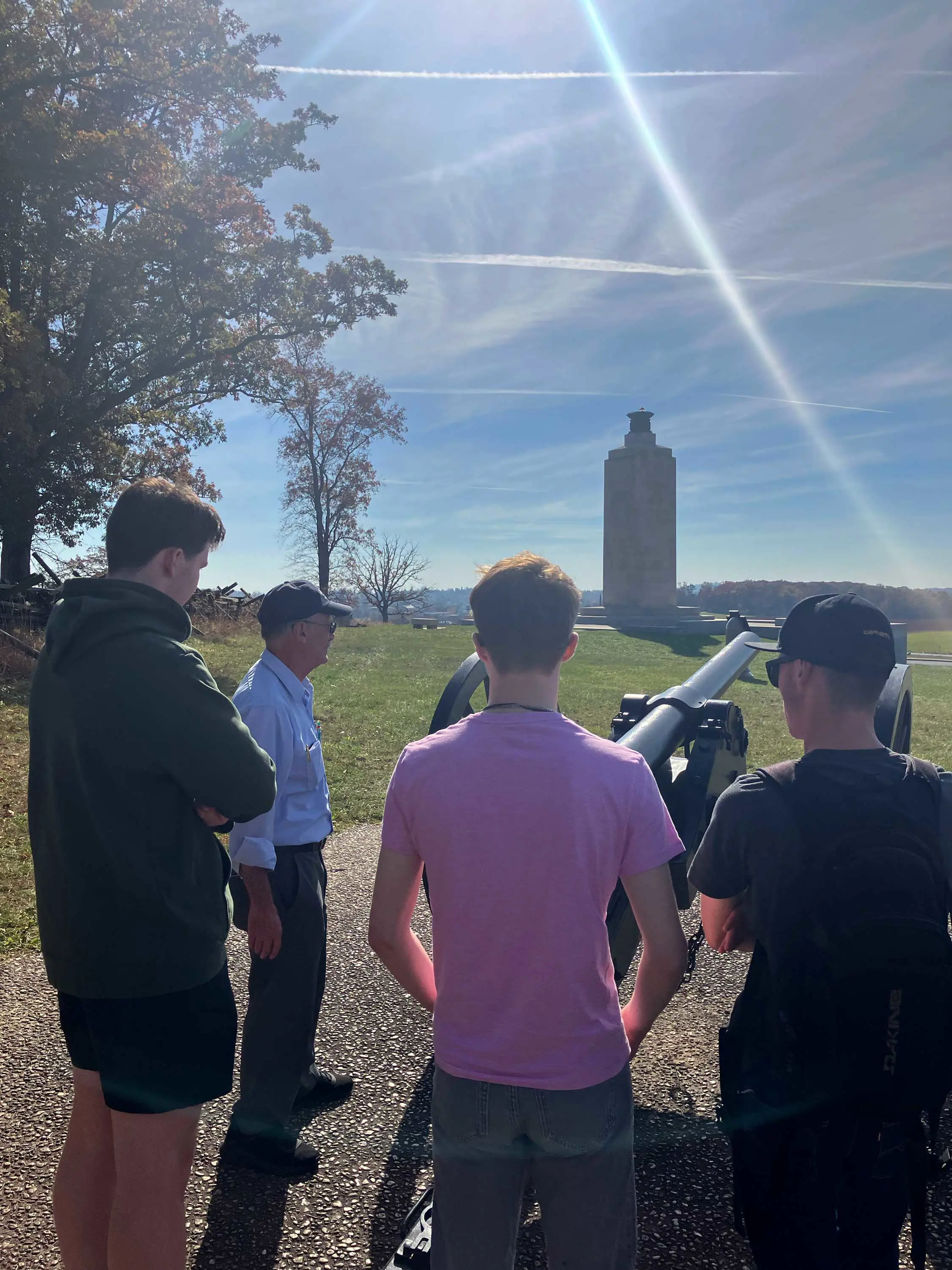Year 12 and Year 13 History and Politics students embarked on a tour of Washington D.C. during October half term. Students had the opportunity to see a range of cultural and historical sites including the American Civil War Museum, the Washington Monument, the Whitehouse and Mount Vernon. They even witnessed history being made when Kamala Harris addressed an unprecedented 70,000 people in her last speech before the US election.
Sixth form students, Thomas, Joshua B, Ollie, Joshua M and Isabel provide iaccounts of the memorable trip:
"After a long drive we arrived in Richmond, Virginia to tour the Virginia State Capital. We visited both the original house chamber, constructed in late-18th century, and the current upper house chamber, alongside its many other rooms. This gave us insight into the running of a state legislature, the history of the state capitol and its multiple renovations. From there we visited the White House of the Confederacy, where Jefferson Davis, the sole Confederate president lived and worked. The house contained many authentic artefacts and recreations of historical items, giving us a window into the past of the mid-19th century during the American Civil War. We also learned about the lives of the enslaved people who lived and worked inside the residence.
We then travelled to the American Civil War Museum, which gave us insight into the life of the average soldier, with multiple students taking part in an interactive explanation of medical procedures from the time. The museum gave a diverse perspective on the war, depicting the lives of soldiers on both the Union and Confederate sides. Additionally, we gained further insight into the experiences of enslaved people and the profound effect of emancipation. After these engaging day activities, we took an evening tour of the National Mall. We started out at the Washington Monument and were in awe of its immense height. From there we visited the World War II Memorial, commemorating the soldiers’ colossal sacrifice. After a short walk along the reflecting pool, we arrived at the Lincoln Memorial, a commemoration of Abraham Lincoln and his actions to end slavery and the American Civil War. We gained an understanding of its great historical significance as the location of the famous March on Washington and Dr Martin Luther King's 'I have a dream' speech.
After a brief walk, we arrived at the Korean War Veterans Memorial, where the inscription 'Freedom is not free' helped highlight to us the great cost of freedom for these soldiers, many sacrificing their lives. Penultimately, we visited the Martin Luther King, Jr. Memorial emblazoned with his famous enduring quotes. Lastly, we visited the Vietnam Veteran’s Memorial, a poignant monument which conveyed a great sense of solemnity and reverence."THOMAS (Year 12)
"On Tuesday we headed to the U.S. Capitol, travelling on the metro and exiting at Union Station - a magnificent stone-built building. As soon as we left the station we saw the top of the U.S. Capitol building and the Statue of Freedom sitting high above a row of low-lying trees. We stopped off via the Supreme Court before we got to the Capitol. The building is roman inspired with great polished stone pillars. We had a tour of the Capitol featuring the site where they intend to bury the first President, George Washington and the National Statuary Hall Collection of statues. The bronze statues are chosen by the different US states and include key civil rights campaigners such as Daisy Lee Gatson Bates.
After we toured the Capitol we headed towards Ford Theatre, the location where Abraham Lincoln was shot. The theatre is still used today but also has a museum. It was interesting to explore and to sit in the theatre where many others did the night Abraham Lincoln was killed - we also saw the house where he was taken in an effort to safe his life.
After this we headed towards the White House, sadly we couldn’t get up close but we saw something we did not expect to see at all. Many of us commented throughout the trip how we had not yet felt the political tension but all of this changed when we got close to the White House surrounded by fences. Hundreds of people were queuing for the Kamala Harris rally later that night. We stopped off at the White House visitor centre and visited the famous civil rights restaurant, Bens Chilli Bowl. Many famous and important people have visited the resturant, from Barack Obama to civil rights campaigners.
Our night ended at the Washington Monument where we got to see Kamala Harris make history. She addressed an unprecedented 70,000 people in her last speech before the election. The atmosphere was electric but also peaceful as everyone had a common interest in hearing Kamala and it was a great show of unity. It is a memory many of us will treasure forever."OLLIE (YEAR 12)
"We visited the Gettysburg Battlefield on Wednesday. The Battle of Gettysburg was one of the most significant events in the American Civil War and a turning point in the war for the Union. It was a three-day battle starting on the 1 July 1863 resulting in an estimated 51,000 casualties, making it the bloodiest battle of the war. What made it so significant was the impact it had on the rest of the war and its outcome. The battle revolved around an offensive campaign by the Confederacy in the hopes that they could capture the Union capitol, Washington D.C, following their latest victories. However the Union managed to keep up with the Confederate army and stop them at Gettysburg inciting a battle that would shape the rest of the war.
We started at Culp’s Hill, where our tour guide Jim took us up the 127 year old tower, pointing out the major geographic points across eighteen square miles of battlefield. Next we drove to the Eternal Light Peace Memorial, seeing many regimental monuments, such as the ones commemorating the 44th and 107th New York Infantry Regiments on the way. The Eternal Light Peace Memorial, erected in 1938, struck home the wish for peace and respect for the soldiers who fought and lost their lives in the Civil War. When visiting the Monument, the most obvious message was an American wish for peace, a desire not to repeat the mistakes of their past and a shrine to American patriotism. The Eternal Light Memorial at Gettysburg was the inspiration for the eternal flame on President Kennedy’s grave at Arlington National Cemetery.
We visited the North Carolina and Virginia Monuments next, designed by their respective states to commemorate the soldiers that they lost in the battle. These carry a deep message to any visitor, whether the soldiers were Confederate and fighting to keep slavery or Union soldiers fighting for its abolishment - they were still just men - with families, wives, mothers and children. Most of the Confederate troops would have never owned slaves and possibly not agreed with the practice of slavery; however they were fighting for their country, their land and lives. The memorials we visited show that the Confederate dead can and should be respected, no matter which side they were fighting for.
We also stopped at ‘Little Round Top’, another key geographical point in the Battle. Little Round Top was the site of an unsuccessful assault by the Confederate’s against the left flank of the Union. There are monuments dedicated to the Union regiments that defended the hill from the Confederacy, such as the 20th Maine Volunteer Infantry Regiment and the 83rd Pennsylvania Volunteer Infantry. It was very interesting to see the hill in person after learning about its strategic advantage in the battle and with the help of our tour guide we understood why it was so important.
The final place we visited was perhaps the most meaningful. We visited the high-water mark of the Confederacy, the closest the Confederates ever got to Unions lines. This happened during an assault that is known today as ‘Pickett’s Charge’. It was a charge across no-mans land towards Cemetery Ridge consisting of roughly 12,500 Confederate soldiers of whom over 6,000 were captured, injured or killed. Seeing the point where the Confederates broke through yet were pushed back by Union reinforcements was very moving, as any visitor can only imagine the conditions the soldiers experienced and the bravery it would have taken to attempt such a feat."JOSHUA B (Year 13)
"After a comfortable bus journey back to Washington from Gettysburg, we were greeted with a clear blue-white sky and it felt as if the leaves had turned ever so slightly darker while we were away. We drove to the National Mall, passing the Washington Monument which stands tall above the city and the Lincoln Memorial with its reflecting pool.
We were dropped off near the Martin Luther King Jr. Memorial, which we had visited two nights beforehand, honouring a Civil Rights titan who pioneered the use of non-violent resistance to help end segregation as well as gain political and voting rights for millions of African Americans. His statue, much like his role in American history, is colossal. He emerges from a block of stone holding his 'I Have a Dream' speech, given in 1963 from the nearby Lincoln Memorial, a major turning point in the Civil Rights Movement.
Next, we walked by the Tidal Basin, the Washington Monument and the Jefferson memorial before stopping at the Franklin D. Roosevelt memorial. The monument is dedicated to the president who led the USA during its recovery from the Great Depression and for most of the Second World War. It was an enclosed green space built up with stone walls and blocks giving a sense of the order he restored during periods of economic and global turmoil. As with many of the memorials we saw, several quotes were inscribed into the walls, one standing out: “The only thing we have to fear is fear itself.” For me, this prompted reflection on the strong, resolute leadership FDR provided in the most difficult circumstances and the values which he represented such as integrity and compassion. We also saw First Lady Eleanor Roosevelt’s statue and learnt about her contributions to the United Nations General Assembly, how she helped write the Universal Declaration of Human Rights and her role advocating for women’s rights.
We then walked by the George Mason memorial, dedicated to a father of the American Bill of Rights. After that we stopped at the Thomas Jefferson Memorial, built to remember a key founding father who wrote the Declaration of Independence of the United States and served as the nation’s third president. It was a temple, built of white marble in a neoclassical style, domed and showcasing a towering bronze statue of Jefferson at its centre. He helped to lay the foundations of the United States, and it left him (as well as many other founding fathers) revered and glorified as time marched on. We did find, however irony in reading excerpts from the Declaration of Independence, that “All men are created equal, that they are endowed by their Creator with certain inalienable rights, among these are life, liberty, and the pursuit of happiness”, having heard about Jefferson's slaves from our tour guide. We enjoyed a quiet moment sitting on the memorial’s steps before heading towards the city.
The sunset over the Potomac was spectacular with orange and red hues melting together. Back at the hotel on our final day in Washington we were treated with a quiz to wrap up the trip. We were tested on a variety of topics including recognising photos from the trip, American culture and what we had done while in America. It was a close race, but one team came out on top in the end winning some sweets and of course eternal glory!"
JOSHUA M (Year 13)
"We visited Mount Vernon, the home of George Washington, the first president of the United States, known as the 'Father of His Country'. He lived at his Mount Vernon residence for 45 years and when he died, he was one of the only presidents to emancipate his slaves.
Mount Vernon’s Ladies Association raised money across America to originally buy and preserve the house. They kept the original furnishings and continue to maintain the house to the same standard as when George Washington lived there. There were many different aspects that required preserving including a black smith, spinning house, slave quarters, a stable yard and a distillery. Washington originally depended on slave labour to maintain his house. In the last year of his life there were 318 enslaved African-American workers living at Mount Vernon. Some slaves held onto their African heritage with colonoware (items that came from their original home).
During George Washington's life, people who visited were usually travelling or had requested to stay at Mount Vernon, leading to the creation of extra bedrooms. We learnt many interesting facts including that Washington owned a harpsichord which was bought for his step-granddaughter and used green paint, made from verdigris in the dining room as it symbolising great wealth as it was very expensive at the time.
Washington was usually up and dressed by a servant at 4am to study. His study room contained many books as he was self-conscious about his level of education and was mostly self-taught. When Washington died instead of being buried in the crypt of the capitol where a place was reserved for him, he was buried at his home. His tomb is now a place where presidents and officials pay their respects for what he did for the country."
ISABEL (Year 12)
